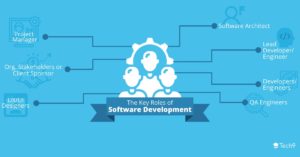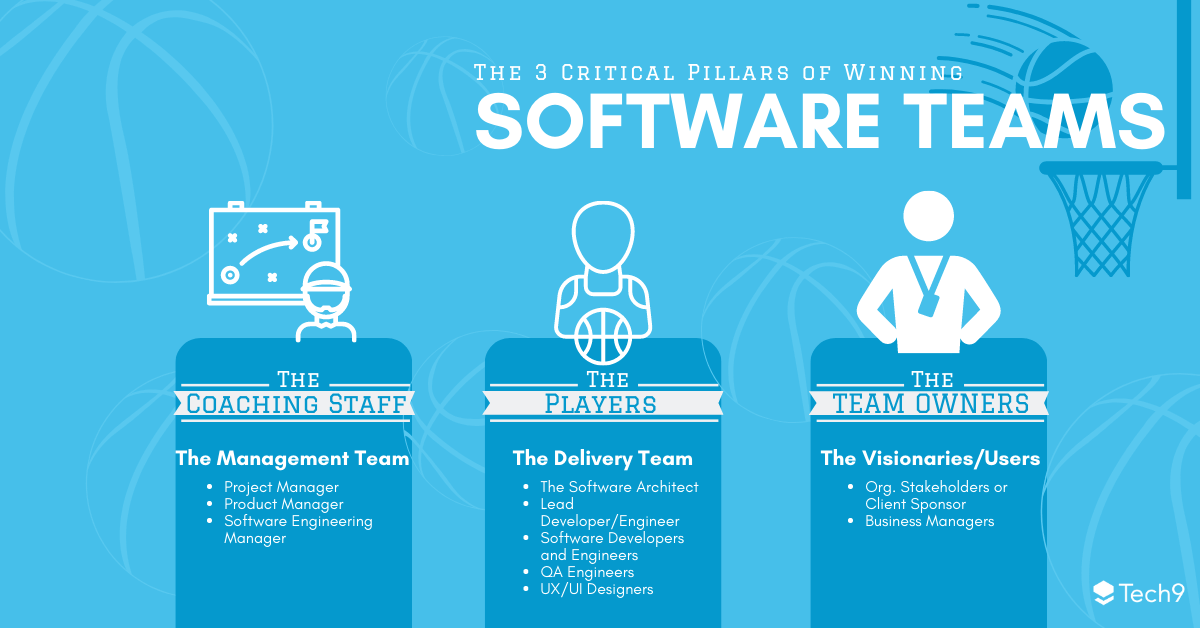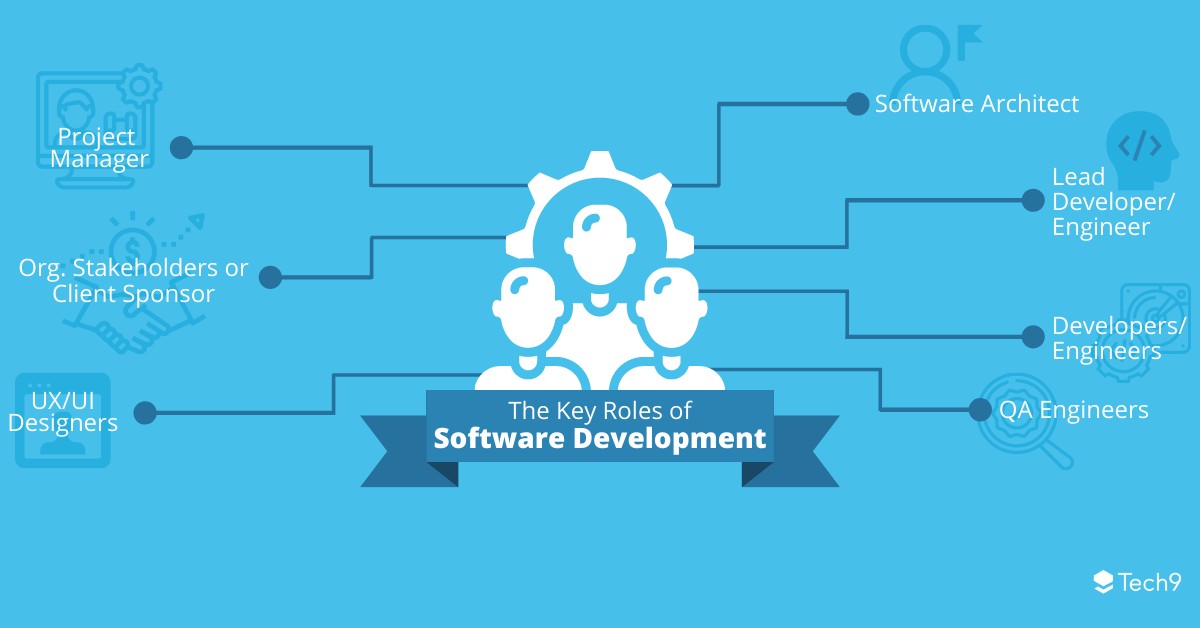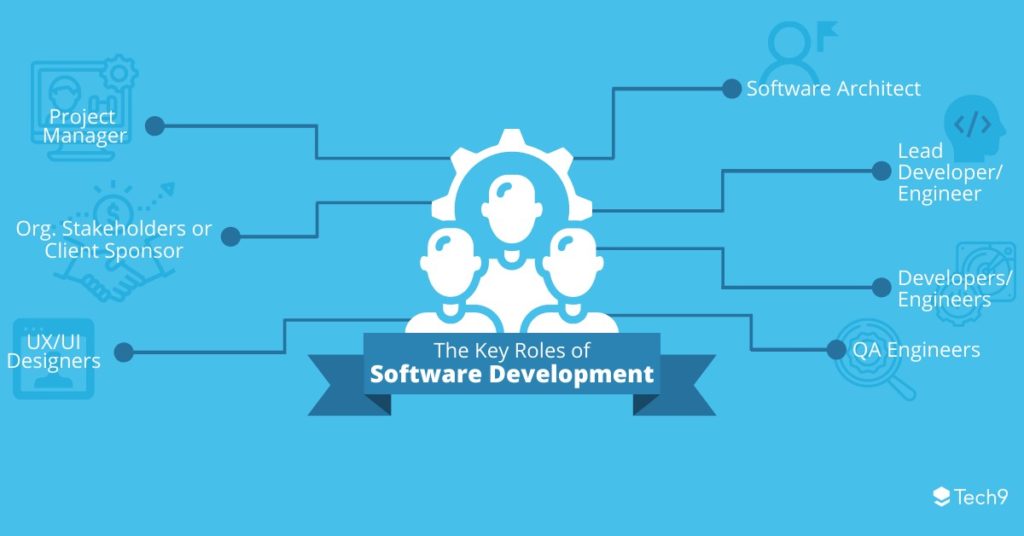Once you’ve made the decision to build custom software and subsequently opted to in-source or outsource the development, you’re off to the races, right? Well…not exactly. Hastily rushing into software development is one of many reasons failure is a near-certainty in this business. Up to 75% of business and IT executives admit that their projects are either always or usually “doomed right from the start.” Yikes.
So, what can you do in the early stages of planning to make sure you avoid disaster? The answer sounds simple, but so many get it wrong: make sure you build your software development team correctly and plan to fill key roles.
The Key Roles of Software Development
It doesn’t matter if you’re outsourcing or in-sourcing –success doesn’t come by hiring a couple of developers or blindly plugging in an outsourced option. There are mission-critical roles that are a part of most high-performing development teams, and they’re not just your standard lead engineers and software developers (obviously important). I use the term “roles” here to mean job function rather than headcount. One person can fill multiple roles, and while this isn’t always ideal, it’s certainly a reality in today’s environment where budgets are a major consideration for most organizations.
Additional key software development roles that should be closely considered are:
- Project Manager
- Organizational Stakeholders or Client Sponsors
- User Experience (UX) Designers
- Software Architect
- Quality Assurance (QA) Engineers

Going in-house? Allocate enough budget to bring on new team members or ensure you have people internally who can be trained to fill certain business roles (technical roles such as developer or architect aren’t easily “trained” into existing, non-technical team members). Outsourcing? Ensure your team is being built in a way that specifically sets you up for success rather than going with a vendor’s off-the-shelf team structure (usually organized in such a way that makes them money rather than produces results).
While it’s nearly impossible to prescribe a blanket laundry list of roles organizations should fill, we’ve found that most businesses with efficient and high caliber software development teams are comprised of three fundamental pillars.
The Three Crucial Pillars of High-Performing Software Development Teams
Most companies, but especially non-tech companies, are just not going to be successful in tech endeavors such as software development unless they give careful consideration to how the team is built. I’m talking about a championship team…or at least a team that can make it to the playoffs, which is mostly what we shoot for here in Utah. 😊 It’s also worth stating: if this is a rebuilding year for your organization, it’s probably not the best time to take on a custom software build. You cannot simply put together a scrub team and hope amazing software will sprout from the ashes.
In general, there are three key pillars to successful software development teams:

The Coaching Staff:
This is your management team. The key contributor to this team is the project manager. The lack of a skilled, competent project manager is a recurring problem on development teams. Even with the most talented developers, without frequent communication, defined goals, and set delivery dates, software projects can become disjointed and unclear. Other key roles in this segment include product manager and software engineering manager.
The Players:
This is the execution team or delivery team. Here, the importance isn’t so much on the process of assembling this team, but rather the talent of the individual players. Much like the USA Olympic Dream Team of 1992, good delivery teams will get together and naturally determine a process and flow that works for them; however, a clearly established process and heavily-involved team are key (and not all that easy to come by). The catalyst of this pillar is the architect, who ensures that the software is built properly. Other players include software developers, QA engineers, and user experience designers.
The Team Owners:
Team owners are the visionaries or users. If you’re reading this article to determine how to build a software development team or outsource development, you are a team owner. This pillar includes anyone who is going to use the software or business managers that are key stakeholders of the software (e.g. their team is going to use the software, or they oversee customer success and the customer is going to use the software). Team owners aren’t just here to write checks; they need to be involved and kept up to date on software development projects to have buy-in, context, and alignment with the coaching staff and ball carriers.
Even after clearly understanding the critical pillars and roles of a software development team, things can still go off the rails if the team isn’t supported by competent leadership and motivated by talented peers. The process of organizing and building a quality team – whether outsourced or in-sourced – is paramount in determining if your software build will be a success.
Still confused? We’ve been building stellar software development teams for a while at Tech9. Shoot us a note, and we’d love to chat.
Stay tuned for the final part of our series where we’ll talk about how much software development really costs.







